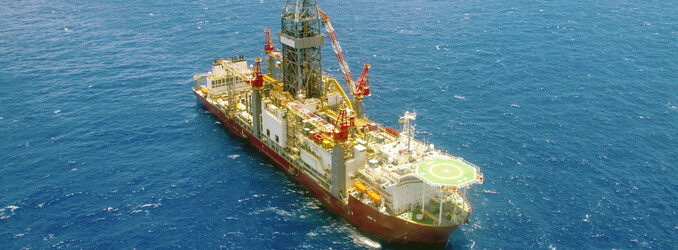(Bloomberg) – Brazil’s state-controlled energy company received approval to explore for oil near the mouth of the Amazon River, capping a yearslong standoff with environmental regulators
Petroleo Brasileiro SA said in a filing Monday that it received permission to drill one exploratory well in the Foz do Amazonas basin.
“The drill rig is at the well site and drilling is scheduled to begin immediately, with an estimated duration of five months,” the company said in its filing.
The world’s biggest oil companies have salivated for a decade over the prospect of drilling in the area, in deep Atlantic waters off Brazil’s north coast. It’s especially tempting for Petrobras as output from Brazil’s existing oilfields is expected to peak around 2030. Yet environmentalists have fought bitterly against the move, warning an oil spill could imperil the ecosystem at the Amazon’s mouth to the south.
Petrobras shares reversed earlier losses and rose as much as 0.6%.
The approval to drill in the Foz do Amazonas comes less than one month before Brazil hosts the UN climate conference, COP30, underscoring President Luiz Inacio Lula da Silva’s competing priorities of growing the nation’s economy while also championing the environment.
“The Equatorial Margin represents the future of our energy sovereignty,” Brazil’s Mines and Energy minister Alexandre Silveira said in a statement. “Brazil cannot give up on knowing its potential.”
While the basin is 330 miles (530 km) from the river itself, environmentalists warn powerful currents could quickly drive any spilled oil into the delicate marine environment fed by the Amazon’s freshwater outflow, endangering the ecosystem and posing a threat to coastal indigenous populations that depend on the region for fishing.
Exxon Mobil Corp.’s discovery of billions of barrels further north in Guyana has boosted interest from oil giants in Foz do Amazonas and the wider region known as the Equatorial Margin. Petrobras compares its geology to the Campos Basin in the southeast that made the company a leading offshore producer in the late 20th Century.
More than 70% of Brazil’s production is currently in a deep-water area known as the pre-salt, but exploration by Petrobras and other producers has largely been disappointing for more than a decade.
A series of failed exploration campaigns in the pre-salt have put the long-term future of Brazil’s oil industry in doubt. Production is expected to peak around 2030 and then start declining unless Petrobras discovers more large fields. Chief Executive Officer Magda Chambriard has even warned about Brazil becoming a net importer in the 2030s.
“Petrobras is running out of places to drill,” said Andre Fagundes, who covers Brazil for energy consultancy Wellingence Inc. “What other long-term prospects do they have in the pipeline?”
The Brazilian Institute of Environment and Renewable Natural Resources said in a statement that the license had been issued “after a rigorous environmental licensing process.” The agency, known as Ibama, mentioned “significant improvements in the project presented, especially with regard to the emergency response structure,” which followed an intense debate with Petrobras after the permit was initially blocked in 2023.
According to Ibama, new emergency response simulation will happen while Petrobras is drilling to focus on wildlife response strategies.
In June, Brazil auctioned 19 out of 47 blocks offered in Foz do Amazonas, making it the most competitive of the five basins where acreage was available despite environmental activists’ protests. Petrobras, Exxon Mobil Corp., and Chevron Corp. won exploration rights in the area, anticipating that the nation’s environmental regulator would soon open the promising offshore oil region for drilling.

